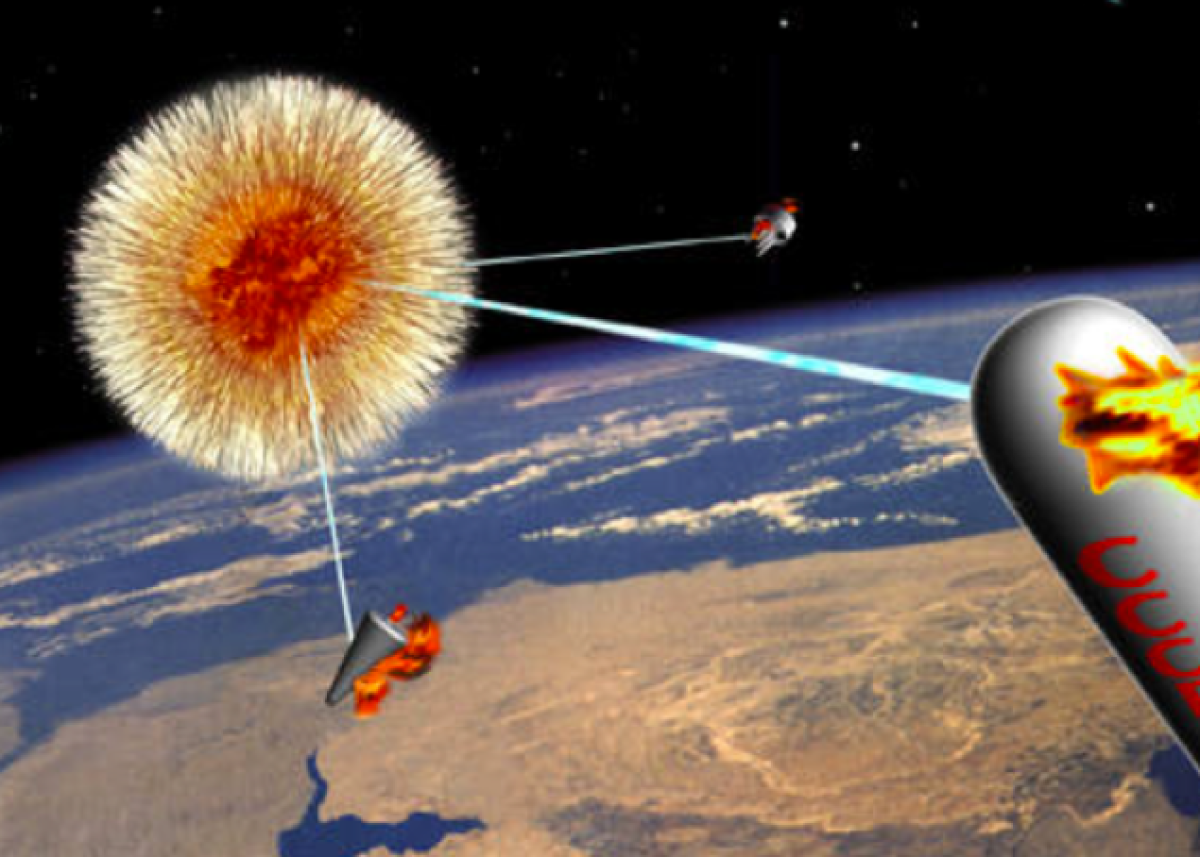Is Trump's "Golden Dome" Missile Defense Plan Achievable?

Table of Contents
Technological Feasibility of Trump's "Golden Dome" Missile Defense System
Current State of Missile Defense Technology
Existing missile defense systems, such as the Terminal High Altitude Area Defense (THAAD) system and the Aegis Ballistic Missile Defense (BMD) system, provide varying degrees of protection. However, they face significant limitations.
- Successful Intercepts: THAAD has demonstrated success in intercepting short- and medium-range ballistic missiles in testing environments. Aegis BMD has also achieved some successes, particularly against less sophisticated threats.
- Unsuccessful Intercepts: The complexity of ballistic missile defense is evident in instances where intercepts have failed, highlighting the challenges posed by advanced technologies and countermeasures.
- Technological Challenges: Hypersonic missiles, traveling at speeds exceeding Mach 5, and sophisticated decoys significantly complicate missile defense, posing a major hurdle for current systems. These advanced threats require a leap in detection and interception capabilities. The effectiveness of current kinetic energy interceptors against these advanced threats remains questionable.
Technological Gaps and Innovations Needed
Realizing the "Golden Dome" vision demands substantial technological advancements. The plan likely envisioned a multi-layered defense incorporating several cutting-edge technologies.
- Space-Based Missile Defense: The deployment of space-based sensors for early warning and tracking of ballistic missiles would be crucial. This would provide a significantly enhanced detection capability compared to ground-based radar systems.
- Directed Energy Weapons (DEWs): Laser weapons offer the potential for rapid, highly accurate, and cost-effective interception of incoming missiles. However, their development and deployment present significant technical challenges.
- Artificial Intelligence (AI) and Machine Learning: AI-powered targeting systems are essential to process the vast amounts of data generated by space-based sensors and other sources, enabling quicker and more accurate interception decisions. Significant research and development (R&D) investment is needed for robust and reliable AI integration.
- Timeframe and Resources: The development and deployment of these advanced technologies would require a massive, sustained R&D investment, spanning decades and involving substantial financial resources.
Financial Viability of the "Golden Dome" Plan
Estimated Costs and Budgetary Implications
The projected cost of developing, deploying, and maintaining a comprehensive "Golden Dome" system is astronomical. Precise figures are difficult to obtain, but even preliminary estimates indicate it would dwarf existing defense budgets.
- Budgetary Comparisons: The cost could potentially rival, or even surpass, the entire annual defense budgets of many nations, demanding a substantial reallocation of resources.
- Economic Impacts: Such significant military expenditure could have substantial consequences for other areas of national spending, potentially impacting social programs, infrastructure development, and economic growth.
- Cost-Benefit Analysis: A rigorous cost-benefit analysis is crucial to determine whether the potential benefits of the "Golden Dome" justify its immense financial burden.
Alternative Resource Allocation Strategies
The massive resources required for the "Golden Dome" raise questions about alternative resource allocation strategies.
- Investing in Other Defense Systems: Resources could be redirected toward improving existing missile defense systems, developing countermeasures against hypersonic weapons, or enhancing cybersecurity defenses.
- Social Programs and Infrastructure: A portion of the funds could be used to support social programs or improve infrastructure, contributing to overall national well-being and security.
- Opportunity Cost: The opportunity cost of prioritizing the "Golden Dome" over other national security priorities must be carefully considered. Budgetary constraints inevitably necessitate difficult choices regarding resource allocation.
Political and Geopolitical Ramifications of the "Golden Dome" Plan
International Relations and Arms Control Treaties
The "Golden Dome" plan has significant implications for international relations and existing arms control treaties.
- International Reactions: The deployment of such a sophisticated system could provoke adverse reactions from other nations, particularly those perceived as adversaries, potentially triggering an arms race.
- Nuclear Proliferation: The perceived invulnerability offered by the "Golden Dome" might embolden some states to pursue nuclear weapons, undermining existing non-proliferation efforts.
- Geopolitical Instability: The plan could destabilize the geopolitical landscape, leading to a heightened sense of insecurity and a potential increase in military tensions.
Domestic Political Support and Public Opinion
Domestic political support and public opinion play a vital role in determining the feasibility of the "Golden Dome" plan.
- Public Perception: Public perception of the need for such a system and its potential costs would influence its political viability. A lack of public support could hinder its implementation.
- Political Debates: The plan would undoubtedly generate intense political debate, with differing opinions regarding its necessity, cost-effectiveness, and potential consequences. Partisan divides could significantly impact its chances of success.
- Political Feasibility: Securing sustained political support for the long-term development and deployment of the "Golden Dome" would be a major challenge, given its immense cost and potential for unintended consequences.
Conclusion: Is Trump's "Golden Dome" Missile Defense Plan a Realistic Goal?
Our analysis reveals that Trump's "Golden Dome" missile defense plan presents immense technological, financial, and political challenges. While the vision of comprehensive missile defense is appealing, the technological gaps, astronomical costs, and potential for international escalation raise serious concerns about its achievability. A balanced assessment suggests that while the pursuit of advanced missile defense capabilities is a legitimate national security priority, the "Golden Dome" concept, as envisioned, presents significant hurdles.
It's crucial to engage in informed discussions about the development and deployment of missile defense systems, weighing their benefits against the considerable risks and costs involved. Continue researching and participating in the conversation surrounding Trump's "Golden Dome" missile defense plan and its implications for national security. Explore resources from reputable think tanks and government agencies to deepen your understanding of this complex issue.

Featured Posts
-
 Understanding Core Weave Inc S Crwv Wednesday Stock Increase
May 22, 2025
Understanding Core Weave Inc S Crwv Wednesday Stock Increase
May 22, 2025 -
 New Trans Australia Run Record Attempt Imminent
May 22, 2025
New Trans Australia Run Record Attempt Imminent
May 22, 2025 -
 Ancelotti Nin Yerini Klopp Un Doldurabilecegi Konular
May 22, 2025
Ancelotti Nin Yerini Klopp Un Doldurabilecegi Konular
May 22, 2025 -
 Core Weave Crwv And Open Ai A Deep Dive Based On Jim Cramers Analysis
May 22, 2025
Core Weave Crwv And Open Ai A Deep Dive Based On Jim Cramers Analysis
May 22, 2025 -
 Gender Reveal Peppa Pigs Family Welcomes A New Member
May 22, 2025
Gender Reveal Peppa Pigs Family Welcomes A New Member
May 22, 2025
